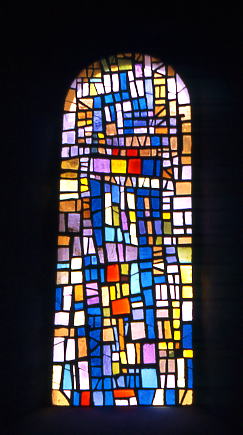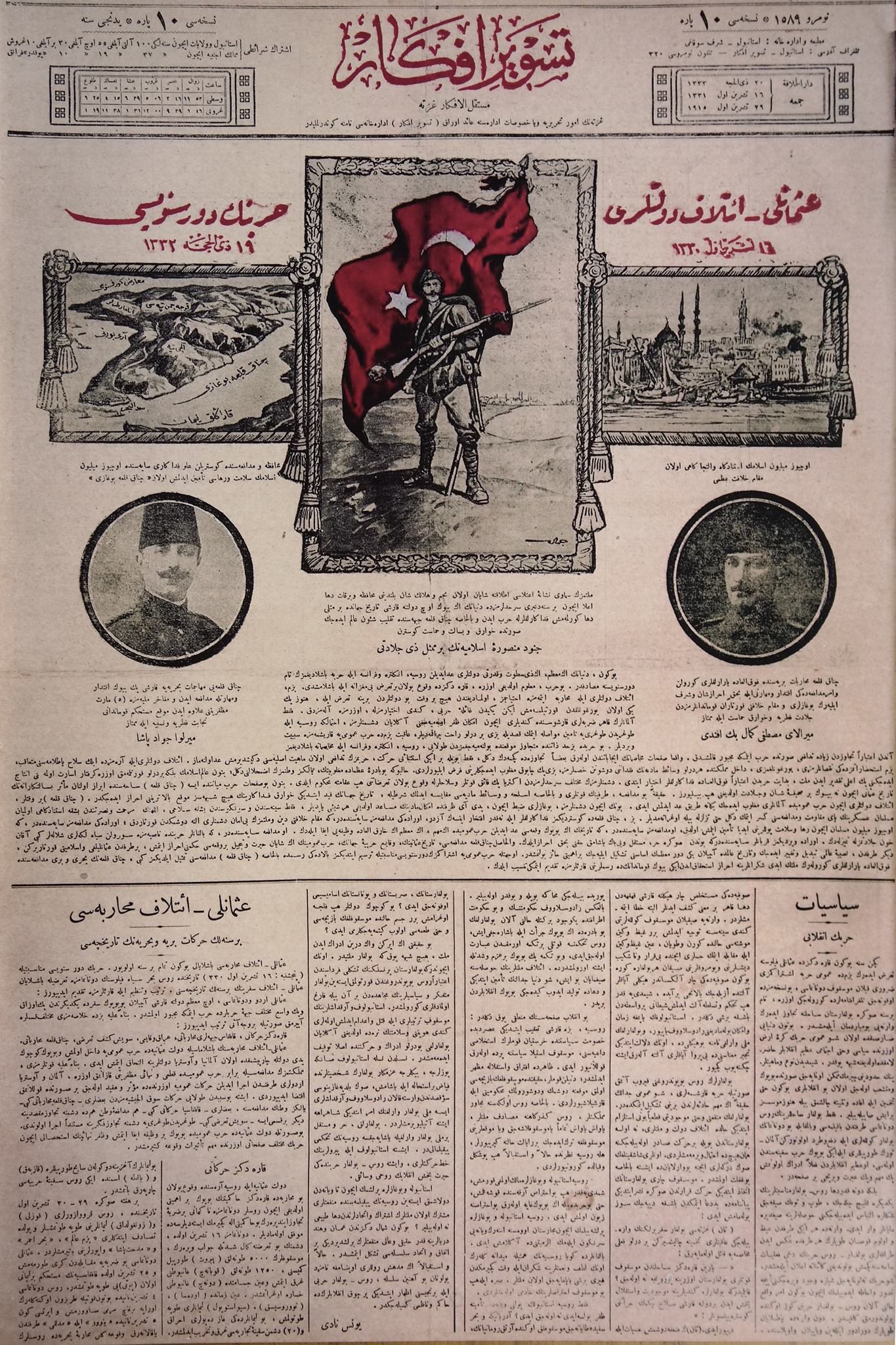|
Fahrelnissa Zeid
Fahrelnissa Zeid (, ''Fakhr un-nisa'' or ''Fahr-El-Nissa''; 7 January 1901 – 5 September 1991) was a Turkish artist best known for her large-scale abstract paintings with kaleidoscopic patterns as well as her drawings, lithographs, and sculptures. Zeid was one of the first women to go to art school in Istanbul. She lived in different cities and became part of the avant-garde scenes in 1940s Istanbul, and post-war Paris. Her work has been exhibited at various institutions in Paris, New York, and London, including the Institute of Contemporary Art in 1954. In the 1970s, she moved to Amman, Jordan, where she established an art school. In 2017, Tate Modern in London organised a major retrospective and called her "one of the greatest female artists of the 20th century". Her largest work to be sold at auction, ''Towards a Sky'' (1953), went for just under one million pounds in 2017. Her record is the USD 2,741,000 sale of her Break of the Atom and Vegetal Life (1962) in 2013 by Chri ... [...More Info...] [...Related Items...] OR: [Wikipedia] [Google] [Baidu] |
Büyükada
Büyükada ( el, Πρίγκηπος or Πρίγκιπος, rendered ''Prinkipos'' or ''Prinkipo''), meaning "Big Island" in Turkish, is the largest of the Princes' Islands in the Sea of Marmara, near Istanbul, with an area of about . It is officially a neighbourhood in the Adalar (''Islands'') district of Istanbul Province, Turkey. During the first half of the 20th century, the island was popular with prosperous Greeks, Jews and Armenians as a refuge from the summer heat of Istanbul. Nowadays the island is almost as solidly Turkish as any suburb of mainland Istanbul. Historically, many residents of Büyükada were fishermen. However, by the late 2010s tourism to Büyükada swelled enormously as it became a favourite day-trip destination for visitors from greenery-starved Arab countries in particular. The surge in tourism was a major factor in bringing to an end the tradition of using phaetons as the only transport on the island in 2020. Visitors have been writing about Büy� ... [...More Info...] [...Related Items...] OR: [Wikipedia] [Google] [Baidu] |
Prince Mired Bin Ra'ad
Prince Mired bin Ra'ad bin Zeid ( ar, مرعد بن رعد بن زيد; born June 11, 1965) is the second son of Prince Ra'ad bin Zeid, head of the royal houses of Iraq and Syria. Early life Mired bin Ra'ad is the second son of Prince Ra'ad bin Zeid, Lord Chamberlain of Jordan, and his Swedish-born wife Margaretha Inga Elisabeth Lind, subsequently. Education Ra'ad studied at Reed's School in England and at the Hun School of Princeton, New Jersey, graduating in 1983. He then graduated from Tufts University, Medford, Massachusetts, in 1987. He graduated from the University of Cambridge with a masters in philosophy and historical studies in 1988. He attended to Royal Military Academy Sandhurst and graduated in 1990. He then returned to Tufts University and studied at The Fletcher School of Law and Diplomacy and graduated in 1995. Career A Royal Decree issued on April 21, 2014, appointed Prince Mired as Head of thHigher Council for the Affairs of Persons with Disabilities(succeedi ... [...More Info...] [...Related Items...] OR: [Wikipedia] [Google] [Baidu] |
Roger Bissière
Roger Bissière (22 September 1886 – 2 December 1964) was a French artist. He designed stained glass windows for Metz cathedral and several other churches. Biography Roger Bissière was born 22 September 1886 in Villeréal, Lot-et-Garonne. In 1901 the family moved to Bordeaux. His mother, Elisabeth Chastaignol, died 25 April 1902. In 1904 his father, Fernand Bissière, did not allow him to enter art school. Roger then travelled to Algeria. When he returned in 1905, he enrolled at the ''école des Beaux- Arts de Bordeaux'' where he studied with Paul François Quinsac until 1909. From September 1910 he studied with Gabriel Ferrier at the École des Beaux-Arts in Paris. He married Catherine Lucie Lotte (nicknamed ''Mousse''), 23 January 1919. Their son Marc-Antoine was born 15 July 1925. Bissière published articles in the magazine L'Esprit Nouveau about Seurat (No. 1, 1920), Ingres (No. 4, 1921) and Corot (No. 9, 1921). In 1936, Bissière was one of the artists who ... [...More Info...] [...Related Items...] OR: [Wikipedia] [Google] [Baidu] |
Académie Ranson
The Académie Ranson was founded in Paris by the French painter Paul Ranson (1862–1909), who himself studied at the Académie Julian, in 1908. Serdar Hizli Collection History With the untimely death of Paul Ranson in 1909, the Academy was headed by the wife of its founder, Marie-France Ranson. It was first based in Rue Henri Monnier in the 9th arrondissement and then moved to the district, in the Rue Joseph Bara.[...More Info...] [...Related Items...] OR: [Wikipedia] [Google] [Baidu] |
Scarlet Fever
Scarlet fever, also known as Scarlatina, is an infectious disease caused by ''Streptococcus pyogenes'' a Group A streptococcus (GAS). The infection is a type of Group A streptococcal infection (Group A strep). It most commonly affects children between five and 15 years of age. The signs and symptoms include a sore throat, fever, headache, swollen lymph nodes, and a characteristic rash. The face is flushed and the rash is red and blanching. It typically feels like sandpaper and the tongue may be red and bumpy. The rash occurs as a result of capillary damage by exotoxins produced by ''S.pyogenes''. On darker pigmented skin the rash may be hard to discern. Scarlet fever affects a small number of people who have strep throat or streptococcal skin infections. The bacteria are usually spread by people coughing or sneezing. It can also be spread when a person touches an object that has the bacteria on it and then touches their mouth or nose. The diagnosis is typically confirmed by ... [...More Info...] [...Related Items...] OR: [Wikipedia] [Google] [Baidu] |
European Painting
The history of Western painting represents a continuous, though disrupted, tradition from classical antiquity, antiquity until the present time. Until the mid-19th century it was primarily concerned with Representational art, representational and Classical antiquity, Classical modes of production, after which time more Modern art, modern, Abstract art, abstract and Conceptual art, conceptual forms gained favor. Initially serving imperial, private, civic, and religious patronage, Western painting later found audiences in the aristocracy and the middle class. From the Middle Ages through the Renaissance painters worked for the church and a wealthy aristocracy. Beginning with the Baroque era artists received private commissions from a more educated and prosperous middle class. The idea of "art for art's sake" began to find expression in the work of the Romanticism, Romantic painters like Francisco de Goya, John Constable, and J. M. W. Turner. During the 19th century commercial ar ... [...More Info...] [...Related Items...] OR: [Wikipedia] [Google] [Baidu] |
Cevat Şakir Kabaağaçlı
Cevat Şakir Kabaağaçlı (17 April 1890 – 13 October 1973; born Musa Cevat Şakir; pen-name "The Fisherman of Halicarnassus", tr, Halikarnas Balıkçısı) was a Cretan Turkish writer of novels, short-stories and essays, as well as a keen ethnographer and travel writer. Early life Şakir was born in 1890 to the Kabaağaclı family. He was the brother of artists Fahrelnissa Zeid and Aliye Berger, and grew up on Büyükada in İstanbul. His father, Mehmet Şakir Pasha, was an impoverished military officer who arranged for his son to study at Oxford University. Cevat dropped out and during his voyage back to Turkey married an Italian woman named Anise. In 1914 he shot his father after an argument on their family farm. Cevat said that they were arguing about his wife. He was sentenced to 14 years in jail, but was released after a general amnesty. Following a political offense in 1925, he was exiled for three years to Bodrum and settled there. Career After completing his ... [...More Info...] [...Related Items...] OR: [Wikipedia] [Google] [Baidu] |
World War I
World War I (28 July 1914 11 November 1918), often abbreviated as WWI, was one of the deadliest global conflicts in history. Belligerents included much of Europe, the Russian Empire, the United States, and the Ottoman Empire, with fighting occurring throughout Europe, the Middle East, Africa, the Pacific, and parts of Asia. An estimated 9 million soldiers were killed in combat, plus another 23 million wounded, while 5 million civilians died as a result of military action, hunger, and disease. Millions more died in genocides within the Ottoman Empire and in the 1918 influenza pandemic, which was exacerbated by the movement of combatants during the war. Prior to 1914, the European great powers were divided between the Triple Entente (comprising France, Russia, and Britain) and the Triple Alliance (containing Germany, Austria-Hungary, and Italy). Tensions in the Balkans came to a head on 28 June 1914, following the assassination of Archduke Franz Ferdin ... [...More Info...] [...Related Items...] OR: [Wikipedia] [Google] [Baidu] |
Cevat Çobanlı
Cevat Çobanlı (14 September 1870Mesut Aydın, ''Türkiye ve Irak Hudûdu Mes'elesi'', Avrasya Stratejik Araştırmalar Merkezi Yayınları, 2001p. 53./ref> or 1871 – 13 March 1938) was a military commander of the Ottoman Army, War Minister (''Harbiye Nazırı'') of the Ottoman Empire and a general of the Turkish Army who was notable for causing major Naval losses to the Allies during their Dardanelles campaign in World War I. Family Cevat was born on 14 September 1870 or in 1871 in Sultanahmet (Istanbul, Ottoman Empire) His mother was Emine Hanım and his father was Müşir Şakir Pasha, Chief of Staff of the Ottoman Army. His family is originally from Malatya. Education and Military Career After graduating from the Galatasaray High School, he enrolled in the Ottoman Military Academy (''Mekteb-i Fünûn-u Harbiyye-i Şâhâne'') in 1888. He graduated from the school as the fourth of his class in 1891 and joined the Ottoman military as an Infantry Second Lieutenant (''M ... [...More Info...] [...Related Items...] OR: [Wikipedia] [Google] [Baidu] |
Grand Vizier
Grand vizier ( fa, وزيرِ اعظم, vazîr-i aʾzam; ota, صدر اعظم, sadr-ı aʾzam; tr, sadrazam) was the title of the effective head of government of many sovereign states in the Islamic world. The office of Grand Vizier was first held by officials in the later Abbasid Caliphate. It was then held in the Ottoman Empire, the Mughal Empire, the Sokoto Caliphate the Safavid Empire and Morocco. In the Ottoman Empire, the Grand Vizier held the imperial seal and could convene all other viziers to attend to affairs of the state; the viziers in conference were called "''Kubbealtı'' viziers" in reference to their meeting place, the ''Kubbealtı'' ('under the dome') in Topkapı Palace. His offices were located at the Sublime Porte. Today, the Prime Minister of Pakistan is referred to in Urdu as ''Wazir-e-azam'', which translates literally to Grand Vizier. Initially, the Grand Viziers were exclusively of Turk origin in the Ottoman Empire. However, after there were troubles b ... [...More Info...] [...Related Items...] OR: [Wikipedia] [Google] [Baidu] |
Pasha
Pasha, Pacha or Paşa ( ota, پاشا; tr, paşa; sq, Pashë; ar, باشا), in older works sometimes anglicized as bashaw, was a higher rank in the Ottoman Empire, Ottoman political and military system, typically granted to governors, generals, dignitary, dignitaries, and others. As an honorific, honorary title, ''Pasha'', in one of its various ranks, is similar to a British Peerage of the United Kingdom, peerage or knighthood, and was also one of the highest titles in the 20th-century Kingdom of Egypt. The title was also used in Morocco in the 20th century, where it denoted a regional official or governor of a district. Etymology The English word "pasha" comes from Turkish language, Turkish ('; also ()). The Oxford Dictionaries (website), Oxford Dictionaries attributes the origin of the English borrowing to the mid-17th century. The etymology of the Turkish word itself has been a matter of debate. Contrary to titles like emir (''amīr'') and bey (''beg''), which were es ... [...More Info...] [...Related Items...] OR: [Wikipedia] [Google] [Baidu] |







